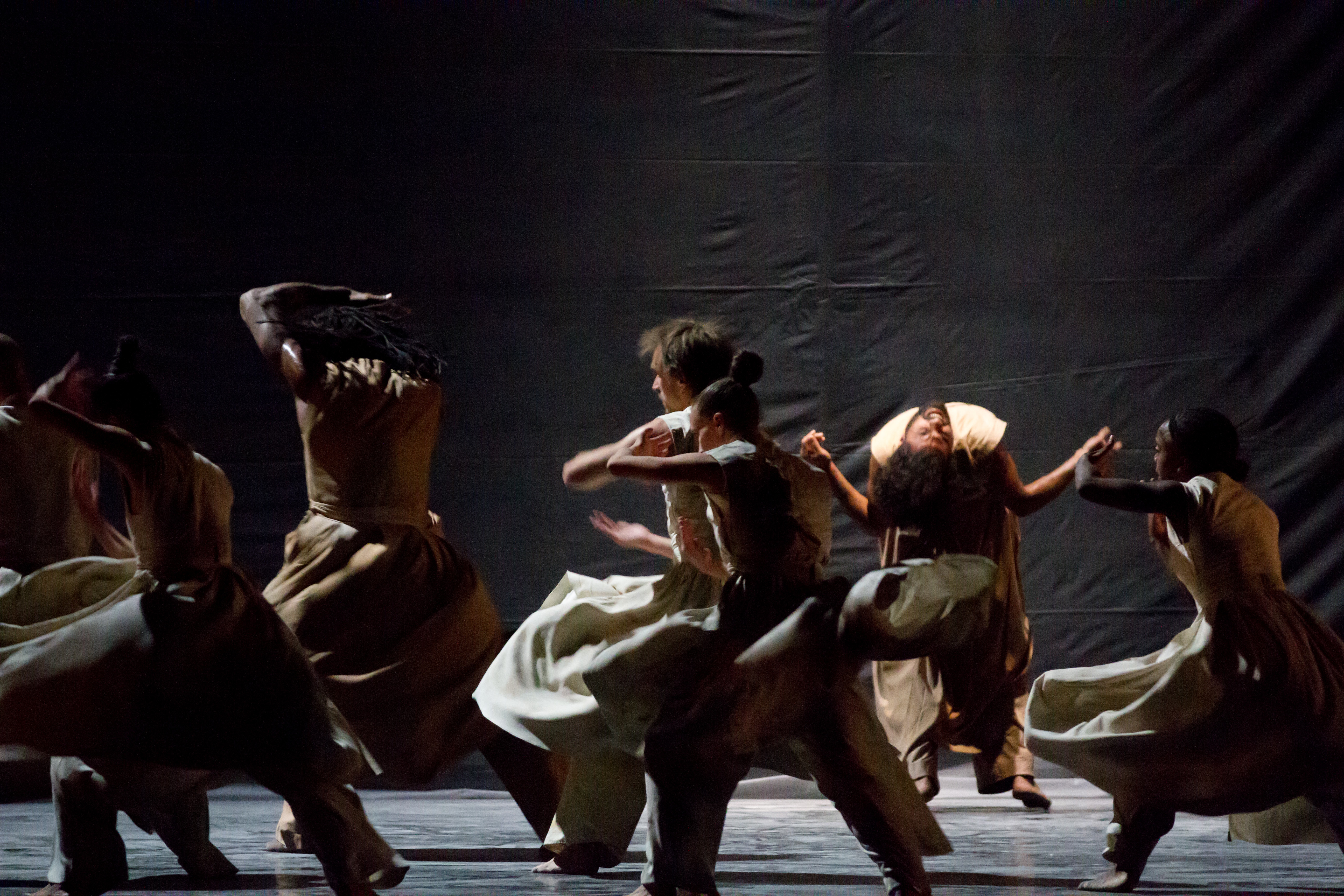The west coast premiere of “Vertical Road” at CAP UCLA’s Royce Hall this week had some vocal public detractors, which surprised me. Khan is one of the most promising and original voices on the dance landscape right now, and the only one who’s creating a completely new dance lexicon. Though its still relatively early in his career, Kahn already belongs on the list of seminal modern dance choreographers, probably the first since Merce Cunningham to truly redraw and revitalize movement with forms never before seen.
And “Vertical Road” may be his most ambitious piece yet. An ensemble work for eight diverse, sophisticated dancers, “Road” featured a timeless, animalistic band of men and women, often moving in unison, always fiercely expressive and responsive, either to some skyward force or the ministrations of the group’s leader/messenger (Salah El Brogy, pictured here in backbend). In a recent BBC interview, Khan described his sense that “sacredness and spirituality” involves a “vertical connection,” whereas the human trod through life is “a horizontal path” and onstage he illustrated that belief dramatically. “Vertical Road” featured dancers that plunged into fast, rushing backbends — El Brogy, pictured, took that backbend from upright standing all the way to the floor — painting an indelible new image for the concert stage. Percussive shoulder work, strong pulsing legs and highly original and cohesive floor work patterns likewise teased out new movement expression in contemporary dance.
Most of the truly powerful and distinctive choreographic voices through history were sprung from a dancer’s resistance/reaction to a preexisting form (Isadora Duncan cast off her ballet slippers; Martha Graham yearned to surpass Denishawn, Merce Cunningham and Paul Taylor catapulted forth from Graham, etc) and Khan’s initial training in Kathak is his incentive. Unlike the showier Bharatanatyam, the North Indian storytelling dance form of Kathak has a dreamier, airier quality, nothing like the infectious hip-shaking presentational energy of Bollywood dance that’s become so popularized here in the U.S.
Though his dancers are never lost and dreamy, the simple, undulating shape of Khan’s scenes felt to retain a gentle Kathak flavor, a pulse that was simultaneously intoxicating and lulling. “Vertical Road” has been criticized for its rambling form, and for the predictability of the story’s punctuation marks (a leader finds 7 sacred “books,” delivers the word, etc) yet to me the piece felt to be a tight, interesting weave on all nature of religious experience. The featured duet, for example, which read for some as trite — powerful male supports broken woman — struck me as one of the most tender and refined duets I’ve ever seen. The careful, inventive gestures and postures on the vertical axis implied that he was helping repair her spiritual connection, something way beyond the two of them. He was readying her to connect and be fulfilled, but not for his benefit or ego. How beautiful, and again, how new.
Additionally, the success of the technical elements of the production — Kimie Nakano’s pitch-perfect costumes, Jesper Kongshaug’s precise and subtle lighting design, Nitin Sawhney’s musical score — kept one stimulated during the constancy of this organic sacred journey.
Casting may help Khan energize the quiet shape of the story over time, and engage the non-religious. A woman in the role of messenger, for example, would be amazing.

